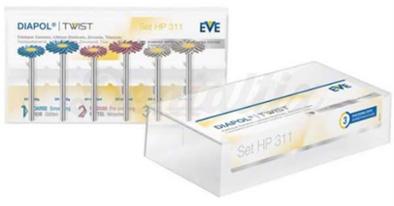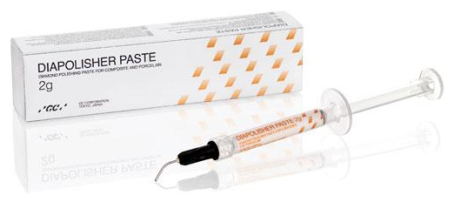Intraoral adjustment and polishing of zirconia and lithium disilicate restorations require precision and the right tools to maintain their integrity and longevity. Maintaining a smooth surface is important to avoid plaque accumulation and antagonist wear
With regard to these types of adjustments, less is more: if only a minor occlusal adjustment is needed, a diamond-coated rubber abrasive polisher might be sufficient.
If burs are necessary, use fine-grit diamond burs to make the necessary occlusal adjustments. Ensure minimal pressure and adequate water cooling to avoid heat generation. Excessive pressure or dry grinding can induct phase transformation in zirconia or microcracks in lithium disilicate

Tip:
The use of new, sharp burs is recommended. They will cut more cleanly and quickly, reducing chair time and minimising the risk of creating defects to the restoration. Dull instruments require more pressure and time to cut, which increases friction and heat.

In this case, it’s also necessary to properly polish the surface again:
Use a coarse rubber at 9000-10000 rpm to smooth out scratches left by the burs.
Use a diamond-coated medium rubber at 11000-12000 rpm to refine the surface.
Use a fine rubber at 12000-13000 rpm to achieve a high-gloss finish.
Each step takes about half a minute. The final polishing might take a bit longer, about a minute.

A goat’s hair wheel with a diamond paste such as DIAPOLISHER paste at 13000-14000 rpm can be used to achieve a mirror-like gloss.

Tip:
Use magnification to check for scratches on the surface. Don’t start the final polishing steps to achieve gloss before the scratches are gone.
Did you know?
Initial LiSi block was designed to be polished, without the need for gloss firing? Due to its refined crystal structure, it’s easily polished to high gloss, extraorally as well as intraorally.
Check this video to the polishing of an Initial LiSi Block restoration.
Note that zirconia requires harder abrasives than lithium disilicate, unless the surface is veneered. The palatal surfaces of anterior teeth are typically not veneered. Using the wrong tools can lead to over-polishing or surface damage.

